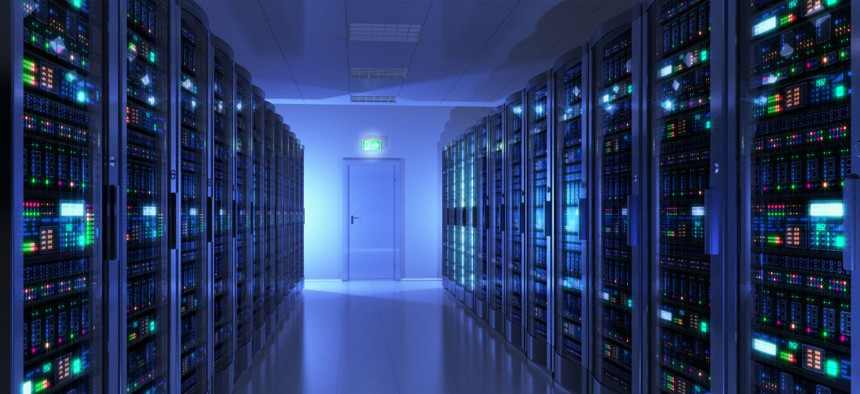One Desert Data Company Is Showing the Tech Sector How to Help Save the Climate

Scanrail1/Shutterstock.com
Switch, Greenpeace says, has been the “definitive leader” among data center operators for its efforts to get to 100 percent renewables as fast as possible.
There are tech companies that say they care about the environment. And then there are ones that really and evidently try to protect it.
Switch, which operates massive data centers in Nevada, has shot to the top of an annual report released this week by Greenpeace that assesses exactly what tech companies are doing, rather than what they’re saying.
Since 2011, a host of technology firms have committed to getting all their energy from renewable sources. Facebook that year announced it was committing to renewable power and later set goals: 50 percent of its operations from renewables by 2018, and 100 percent at some yet-to-be defined point in the future.
Apple and Google also made different 100 percent renewable commitments in 2012, and all three also score well in Greenpeace’s rankings for advocacy—like pushing governments and utilities to build new renewable infrastructure.
Switch, Greenpeace says, has been the “definitive leader” among data center operators for its efforts to get to 100 percent renewables as fast as possible—which it will achieve in August—both by finding ways to buy clean power and through “aggressive advocacy” when that power wasn’t available.
Founded in 2000, Switch runs some of the world’s biggest data centers, the first of which opened in 2009 near Las Vegas. Hosting data in a way that doesn’t damage the planet is an important business ethic, said Adam Kramer, senior vice president for strategy at Switch. But the company has had to fight long and hard to get it.
In 2011, Kramer said, the company asked NV Energy, the Nevada state utility, to sell it enough renewable energy to power its centers. When the utility refused, Switch applied to local authorities for the right to bypass NV Energy and invest in a solar company from which to buy its energy directly.
Switch eventually reached a deal with NV Energy to buy solar power through the utility, but ended up suing it for overcharging. In December 2016, regulators finally allowed Switch to buy directly from solar suppliers—after paying NV Energy a $27 million exit fee.
Switch is now buying the 180 megawatts of power it needs direct from solar operators in Nevada, according to Kramer. It has a new data center in Michigan, which includes contracts with local authorities to buy enough green power to run it, and is planning to build new renewable infrastructure—probably a wind farm—nearby, which will eventually be its power source.
Such changes have knock-on effects. In one example, online retailer eBay got a boost to its green goals when Switch became renewable, because eBay buys server space from it. Switch has also sponsored a constitutional amendment in Nevada to break NV Energy’s monopoly, allowing Nevadans to buy energy—including renewable—elsewhere.
Of course, some companies in the Greenpeace report are much bigger, with huge power needs to match. Google already has contracts to buy 2.6 gigawatts of renewable power, which still doesn’t get it to the goal of 100 percent—though it says it will hit that in 2017.
Some, meanwhile, are falling short. Most branches of Amazon’s business scored poorly, particularly on transparency: Greenpeace noted while Amazon Web Services is the biggest cloud-computing business in the world, it makes public almost no information about its energy use. AWS has expanded its operations in Virginia, where almost no green power is available, outweighing the renewable commitments it made elsewhere, Greenpeace said.
In response, AWS said in a statement it had “made strong progress” toward its long-term goal of sourcing all its power from renewables, reaching 45 percent renewable by the end of last year. Greenpeace’s assessment, based on information in the public domain, is that it’s achieved less than half that.
Video streaming, meanwhile, is set to become the single biggest user of energy in the tech sector—and some streaming companies aren’t doing much to protect the planet from their business. Apple and Facebook score well, but Netflix—despite once claiming that streaming produces less CO2 than breathing—has made no serious commitment to sourcing cleaner energy for the bulk of its services, Greenpeace says.
NEXT STORY: Army Wants to 3-D Print Minidrones in 24 Hours





